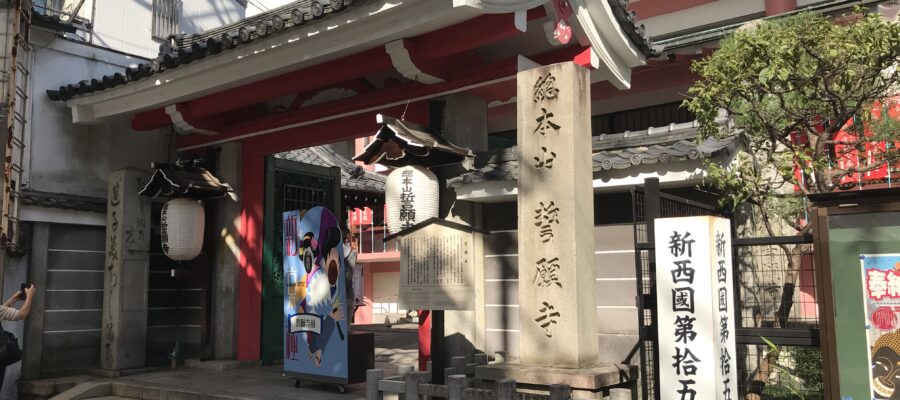人通りの多い街中に建つお寺
京都の人通りの多い街中に建つお寺、誓願寺。三条から市場まで、寺町通りや新京極通は、よく行き来するのですが、新西国霊場を巡りだすまで、このお寺の存在に全く気付いていませんでした。
このお寺も場所をよく移動したらしく、都が平城京から長岡京に移ると、誓願寺も移され、その後、平安遷都の際には一条小川に七堂伽藍を再現されました。また、戦国末期には秀吉の命で、現在の寺町三条に移ってきました。
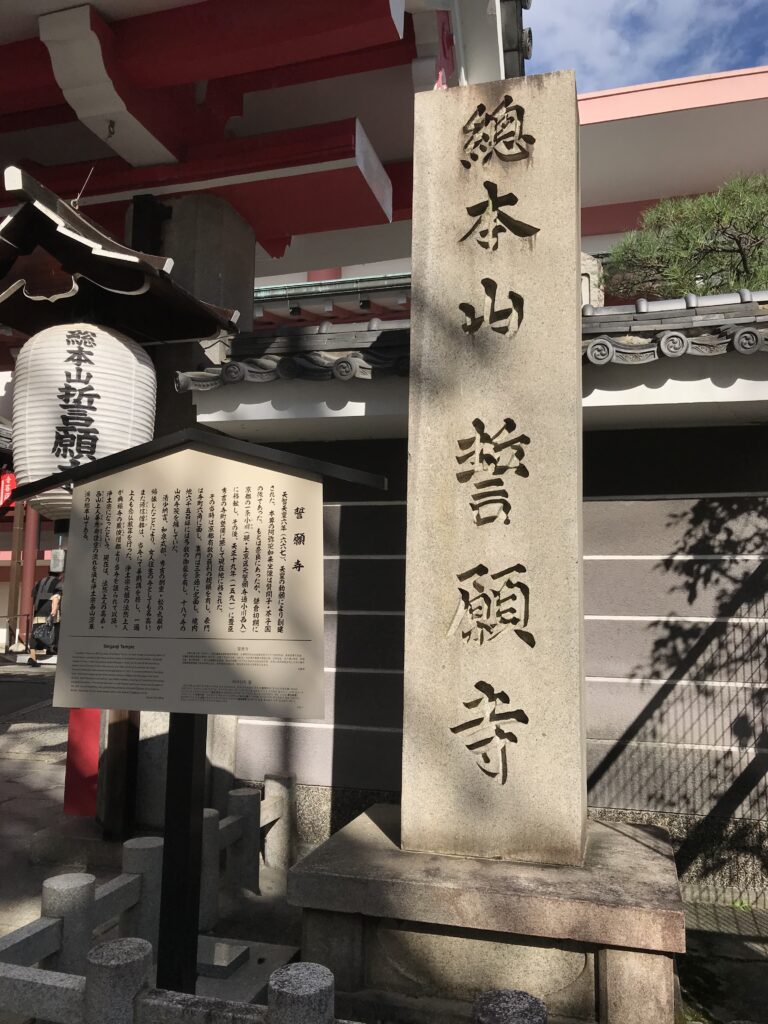
人通りの多い商店街のアーケード街の中心スポットにありますので、通りの面した寺門をくぐるとすぐにお堂になります。まずは、お堂に上がってお参りしました。私以外にも10名程度、お見えになられています。中には、ご夫婦で来られている方もいました。
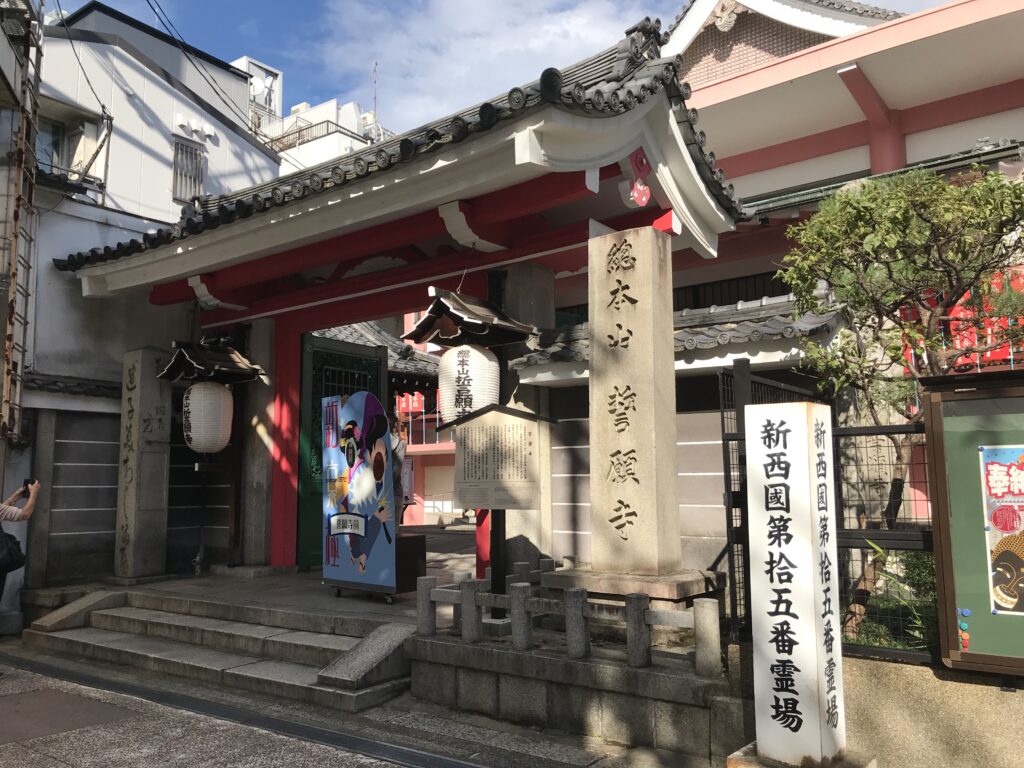
清少納言も和泉式部もこのお寺で往生
お寺からいただいたパンフレットによると、この誓願寺では平安時代の有名な女性2名が往生をとげられています。一人は清少納言。尼になり、本堂のそばに庵室を結んで、往生されたそうです。もう一人は和泉式部。この方も庵を結び、往生をしました。この庵は「誠心院」として、新京極通を少し下った場所に現在も存在します。
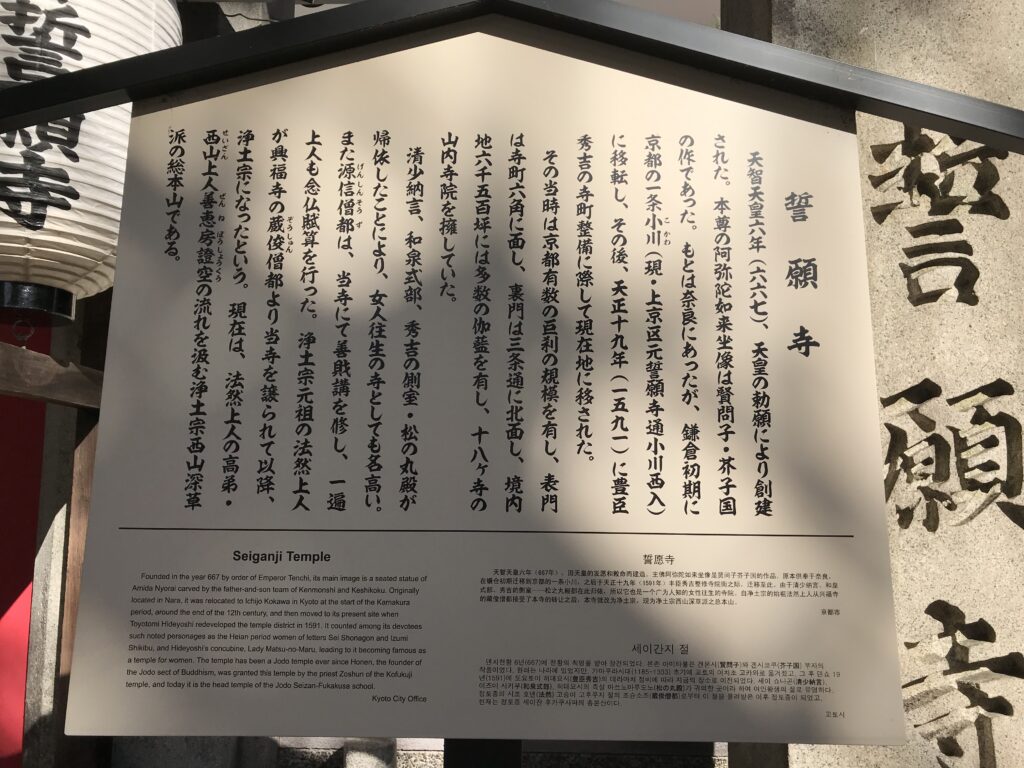
歴史が折り重なる京都
直ぐ近くに誓願寺墓地もあり、そこには落語の祖をいわれる安楽庵策伝上人や、日本初の人体解剖を行った医師、山脇東洋の墓もあり、京都の何重にも折り重なった歴史の厚みを感じることができます。(完)
誓願寺の御朱印
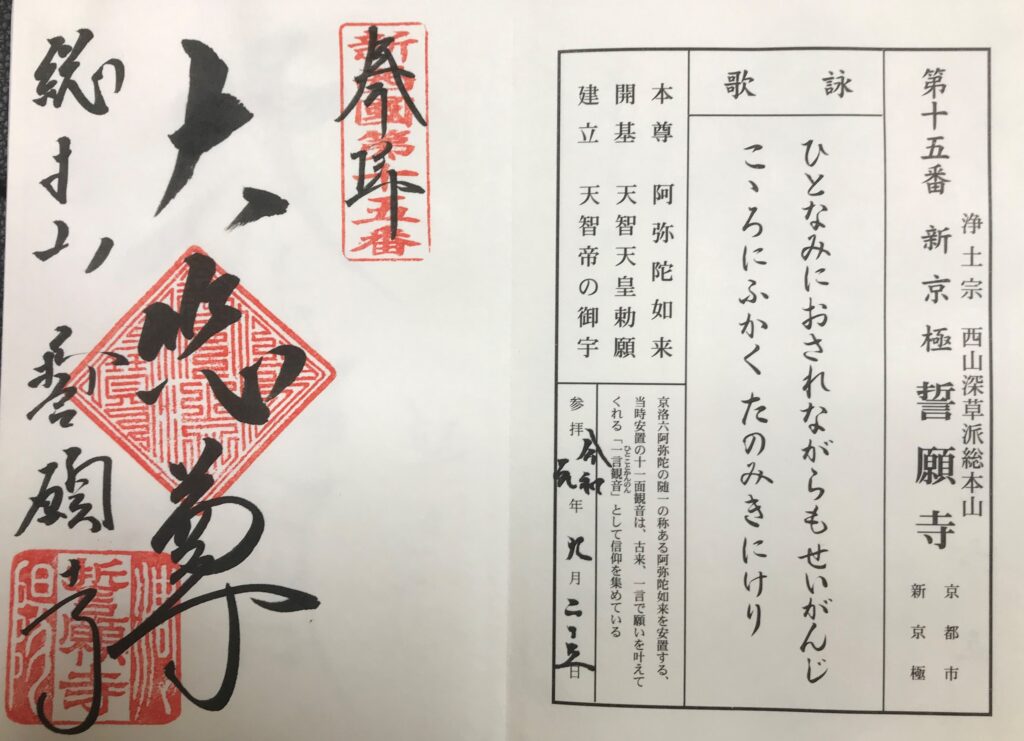
京都のお土産
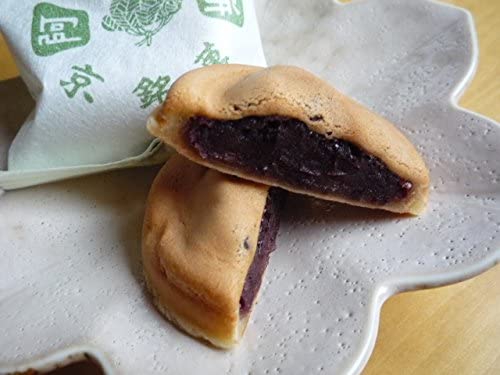
新品価格
¥4,845から
(2022/4/23 16:25時点)
Seiganji Temple (Kyoto)
A temple built in a busy city
Seiganji Temple stands in the middle of a busy street in Kyoto. Although I often travel Teramachi-dori and Shinkyogoku-dori from Sanjo to the market, I was completely unaware of this temple until I started touring the New West Japan 33 Sacred Sites.
It seems that this temple was often moved from place to place. When the capital was moved from Heijo-kyo (Nara city) to Nagaoka-kyo, Seiganji was also moved, and later, when the capital was moved to Heian-kyo (Kyoto city), the seven halls of the temple were recreated in Ichijo Ogawa. In addition, at the end of the Warring States period, the temple was moved to its present location in Teramachi Sanjo by order of Toyotomi Hideyoshi, the most powerful feudal lord at that time.
It is located in a central spot in a busy shopping arcade, so as soon as you pass through the temple gate facing the street, you will be at the hall. First, I went up to the hall to pay my respects. There were about 10 other visitors besides myself. Some of them were married couples.
Both Sei Shonagon and Izumishikibu died at this temple.
According to the pamphlet I received from the temple, two famous women of the Heian period passed away at this temple. One was Sei Shonagon. She became a nun, built a hermitage near the main hall, and passed away. The other is Izumishikibu. She, too, built a hermitage and passed away. This hermitage still exists today as “Seishin-in” a little further down Shinkyogoku Dori.
Kyoto, a city with a rich history
Nearby is the cemetery of Senganji Temple, which also contains the tombs of Anrakuan Shoden Shonin, the founder of rakugo, and Toyo Yamawaki, Japan’s first physician to perform human dissections, allowing visitors to feel the depth of Kyoto’s multi-layered history. (End)
Temple Seiganji (Kyoto)
Un temple construit dans une ville animée
Le temple Seiganji se dresse au milieu d’une rue animée de Kyoto. Bien que j’emprunte souvent Teramachi-dori et Shinkyogoku-dori pour me rendre au marché de Sanjo, je ne connaissais pas du tout ce temple jusqu’à ce que je commence à parcourir les 33 sites sacrés du Nouvel Ouest japonais.
Il semble que ce temple ait été souvent déplacé d’un endroit à l’autre. Lorsque la capitale fut déplacée de Heijo-kyo (ville de Nara) à Nagaoka-kyo, Seiganji fut également déplacé, et plus tard, lorsque la capitale fut déplacée à Heian-kyo (ville de Kyoto), les sept salles du temple furent recréées à Ichijo Ogawa. En outre, à la fin de la période des États combattants, le temple a été déplacé à son emplacement actuel à Teramachi Sanjo sur ordre de Toyotomi Hideyoshi, le plus puissant seigneur féodal de l’époque.
Il est situé dans un endroit central, dans une galerie marchande très fréquentée. Dès que vous aurez franchi la porte du temple qui donne sur la rue, vous serez devant le hall. Je suis d’abord monté dans le hall pour présenter mes respects. Il y avait environ 10 autres visiteurs en plus de moi. Certains d’entre eux étaient des couples mariés.
Sei Shonagon et Izumishikibu sont morts dans ce temple.
Selon la brochure que j’ai reçue du temple, deux femmes célèbres de la période Heian sont décédées dans ce temple. L’une était Sei Shonagon. Elle est devenue nonne, a construit un ermitage près du hall principal et est décédée. L’autre est Izumishikibu. Elle aussi a construit un ermitage et est décédée. Cet ermitage existe encore aujourd’hui sous le nom de “Seishin-in”, un peu plus loin sur Shinkyogoku Dori.
Kyoto, une ville à l’histoire riche
À proximité se trouve le cimetière du temple Senganji, qui contient également les tombes d’Anrakuan Shoden Shonin, le fondateur du rakugo, et de Toyo Yamawaki, le premier médecin japonais à pratiquer des dissections humaines, ce qui permet aux visiteurs de ressentir la profondeur de l’histoire à plusieurs niveaux de Kyoto. (Fin)
